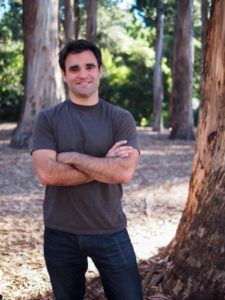How the Adesnik Lab from UC Berkeley achieved unmatched imaging performances with Spark Lasers’ ALCOR
The Adesnik Lab has been using Spark Lasers’ ALCOR 920-4, which remarkably improved their imaging results.
Cutting edge research needs cutting edge product

“Our goal was to achieve high-speed, high-SNR (signal-to-noise ratio) and high-throughput full 3D recordings of neural activity in relatively dense excitatory neural populations. Two-photon Bessel-focus scanning microscopy [1] does provide volumetric high-speed and high-throughput capabilities, however with lower SNR than conventional ‘single-plane’ two-photon Gaussian-focus scanning microscopy.
Before receiving the laser, we were very much SNR-limited in our high-speed Bessel beam recordings of dense excitatory populations. Switching to a more expensive high-performing NIR objective did improve our SNR however at the expense of having to work at high acquisition zoom (i.e pixels per µm) hence reducing the throughput/number of recorded cells in a given field-of-view.”
Hillel Adesnik, Lamiae Abdeladim, Adesnik lab, University of California, Berkeley
Why Adesnik Lab, University of California, Berkeley chose ALCOR from Spark Lasers
“The main strength of the laser is the high available average power (4W) at the laser output combined with the short initial pulse duration that can be automatically optimized to pre-compensate for dispersion along the microscope optics. This combination allowed us to collect spectacular volumetric high-speed datasets with excellent signal-to-noise ratio and with high-throughput. We also noted that, as expected from the specs of this laser, it does allow for deeper imaging with two-photon Bessel-focus scanning.”
Lamiae Abdeladim adds : “The combination of high available laser power and automated pulse duration optimization at the objective focus, allowed us to achieve unmatched high-SNR high-speed high-throughput volumetric imaging performances in vivo.”

Ti:Sa vs ALCOR 4W laser comparison/Nikon 25X objective IR/Average intensity projections
In vivo two-photon functional volumetric Bessel beam imaging of excitatory cortical neurons in awake mice
70µm Bessel depth-of-field – Nikon25X objective w/ correction collar
When technology supports research labs
Lamiae Abdeladim explains which techniques were involved in Adesnik Lab’s studies : “our study involved high-speed two-photon volumetric recordings of neural activity using Bessel-focus scanning microscopy [1]. We also envision this laser product to be of particular relevance to other 2P advanced and power-demanding functional recording techniques such as SLM-based multi-plane imaging [2] or incoherent pulse splitting [3]. The automated dispersion compensation feature also makes it a great solution for mesoscale two-photon systems with large added positive group-delay dispersion [4].
Their prefered feature in the tested laser solution? “The short initial pulse duration combined with the automated large-range of dispersion pre-compensation is an extremely attractive feature of the system. The ultracompacity of the system is also a great advantage to accommodate complex extended microscope systems.”
References:
[1] Lu, R., Sun, W., Liang, Y., Kerlin, A., Bierfeld, J., Seelig, J. D., … & Ji, N. (2017). Video-rate volumetric functional imaging of the brain at synaptic resolution. Nature neuroscience, 20(4), 620-628.
[2] Liu, R., Ball, N., Brockill, J., Kuan, L., Millman, D., White, C., … & Saggau, P. (2019). Aberration-free multi-plane imaging of neural activity from the mammalian brain using a fast-switching liquid crystal spatial light modulator. Biomedical optics express, 10(10), 5059-5080.
[3] Chen, B., Chakraborty, T., Daetwyler, S., Manton, J. D., Dean, K., & Fiolka, R. (2020). Extended depth of focus multiphoton microscopy via incoherent pulse splitting. Biomedical Optics Express, 11(7), 3830-3842.
[4] Sofroniew, N. J., Flickinger, D., King, J., & Svoboda, K. (2016). A large field of view two-photon mesoscope with subcellular resolution for in vivo imaging. Elife, 5, e14472.